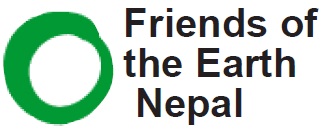Pro Public has implemented “Defining the Public Agenda and Strengthening Constituencies for Peace and Reform in Nepal (DPASCPRN)” Project for the period of January 15, 2006 to December 31, 2006 with the financial support of The Asia Foundation (TAF). The goal of the project was to deepen public dialogue on critical issues related with conflict and to strengthen the capacity and outreach of constituencies for peace and reform in Nepal. To achieve the goal of the project, Pro Public for the past one year was involved in the decentralized public dialogues organizing “issue-based dialogues” in various levels so as to come up with peace, reform and sustainability of democracy agenda at the end.
As per the project document, Pro Public had conducted 100 public dialogue forums (PDFs) in 100 constituencies of 56 districts, 5 regional level PDFs in the five development regions and one national-level PDF in Lalitpur.
The constituency-level PDFs were conducted by mobilizing purposively selected 100 Good Governance Clubs (GGCs) and their Good Governance District Coordination Committees (GGDCCs) in 100 parliamentary constituencies of 56 districts. The constituency-level PDFs were held for attaining a pious peace and a positive change in which altogether 3735 participants including 780 female and 2,955 male from different walks of life had participated in. They were selected considering the value of inclusiveness.
Having analyzed the agenda of peace and reform collected through discussion and dialogue in 100 parliamentary constituencies, the draft regional agenda was prepared for each region and made public in all the five development regions in regional-level PDFs ( Nov. 20 to Dec. 9, 2006). The regional agenda for peace and reform received a final shape after incorporating suggestions collected through the regional-level PDFs.
The agenda received from regional-level PDFs was re-analyzed and national agenda (draft) for the peace, reform and sustainability of democracy was prepared. The national agenda was made public on December 27, 2006 in a national level public dialogue forum in the presence of Rt. Honorable Subash Chandra Nembang, Speaker, House of Representatives – the Chief Guest of the program; parliamentarians of the constituencies-concerned; high-level government officials-concerned; human rights activists; journalists; NGOs and the representatives of civil society organizations from all the 14 zones. The national agenda for the sustainability of peace, reform and democracy has been prepared including the suggestions expressed in the national dialogue forum as well. A synthesized report of findings, consensus opinions and deliberations has been published and distributed among the stakeholders in the form of proceedings of the national-level public dialogue forum.
- TOT for MTs – 24 MTs (April 16 to 18, 2006 in Kathmandu)
- Regional Facilitation Training – 200 GGC members (June 12 to 14 2006 in Sunsari, Kathmandu, Kaski & Banke)
- Publication and distribution of 20000 leaflet, 5000 poster and 500 public dialogue forum guideline
- Constituency level PDF – 100 (June-Sept. 2006)
- Regional Level PDF – 5 (Nov. 20- Dec. 9, 2006 in Biratnagar, Hetauda, Pokhara, Nepalgunj and Dhangadhi)
- National-level public dialogue forum -1 (Dec. 27, 2006 in Kathmandu)
- National agenda sharing workshop for constituency-level advocacy by GGDCCs/GGCs (December 31, 2006 in Kathmandu)
- Publication and distribution of proceedings of the national-level public dialogue forum 1000 copies and leaflet of final national agenda 25000 copies.
Defining the Public Agenda: Strengthening Constituencies for Peace and Refrom in Nepal
Forum for Protection of Public Interest (Pro Public)
Gautam Buddha Marg, Anamnagar, Kathmandu
P.O.Box: 14307
Phone: ++977 1 4268681
Fax: ++977 1 4268022
e-mail: salga@propublic.wlink.com.np
Proceedings of National Level Public Dialogue Forum for Peace and Reform
| Pro Public had conducted 100 public dialogue forums (PDFs) in 100 constituencies of 56 districts as part of the project activities (Table 1, 2 and 3). |
|||||||||||||||||||||||||||||||||||||||||||||||||||||||||||||||||||||||||||||||||||||||||||||||||||||||||||||||||||||||||||||||||||||||||||||||||||||||||||||||||||||||||||||||||||||||||||||||||||||||||||||||||||||||||||||||||||||||||||||||||||||||||||||||||||||||||||||||||||||||||||||||||||||||||||||||||||||||||||||||||||||||||||||||||||||||||||||||||||||||||||||||||||||||||||||||||||||||||||||||||||||||||||||||||||||||||||||||||||||||||||||||||||||||||||||||||||||||||||||||||||||||||||||||||||||||||||||||||||||||||||||||||||||||||||||||||||||||||||||||||||||||||||||||||||||||||||||||||||||||||
| Table 1: Coverage of PDFs by Development Region and Electoral Constituencies | |||||||||||||||||||||||||||||||||||||||||||||||||||||||||||||||||||||||||||||||||||||||||||||||||||||||||||||||||||||||||||||||||||||||||||||||||||||||||||||||||||||||||||||||||||||||||||||||||||||||||||||||||||||||||||||||||||||||||||||||||||||||||||||||||||||||||||||||||||||||||||||||||||||||||||||||||||||||||||||||||||||||||||||||||||||||||||||||||||||||||||||||||||||||||||||||||||||||||||||||||||||||||||||||||||||||||||||||||||||||||||||||||||||||||||||||||||||||||||||||||||||||||||||||||||||||||||||||||||||||||||||||||||||||||||||||||||||||||||||||||||||||||||||||||||||||||||||||||||||||||
|
|||||||||||||||||||||||||||||||||||||||||||||||||||||||||||||||||||||||||||||||||||||||||||||||||||||||||||||||||||||||||||||||||||||||||||||||||||||||||||||||||||||||||||||||||||||||||||||||||||||||||||||||||||||||||||||||||||||||||||||||||||||||||||||||||||||||||||||||||||||||||||||||||||||||||||||||||||||||||||||||||||||||||||||||||||||||||||||||||||||||||||||||||||||||||||||||||||||||||||||||||||||||||||||||||||||||||||||||||||||||||||||||||||||||||||||||||||||||||||||||||||||||||||||||||||||||||||||||||||||||||||||||||||||||||||||||||||||||||||||||||||||||||||||||||||||||||||||||||||||||||
| Table 2: Coverage of PDFs by Geographical Location | |||||||||||||||||||||||||||||||||||||||||||||||||||||||||||||||||||||||||||||||||||||||||||||||||||||||||||||||||||||||||||||||||||||||||||||||||||||||||||||||||||||||||||||||||||||||||||||||||||||||||||||||||||||||||||||||||||||||||||||||||||||||||||||||||||||||||||||||||||||||||||||||||||||||||||||||||||||||||||||||||||||||||||||||||||||||||||||||||||||||||||||||||||||||||||||||||||||||||||||||||||||||||||||||||||||||||||||||||||||||||||||||||||||||||||||||||||||||||||||||||||||||||||||||||||||||||||||||||||||||||||||||||||||||||||||||||||||||||||||||||||||||||||||||||||||||||||||||||||||||||
|
|||||||||||||||||||||||||||||||||||||||||||||||||||||||||||||||||||||||||||||||||||||||||||||||||||||||||||||||||||||||||||||||||||||||||||||||||||||||||||||||||||||||||||||||||||||||||||||||||||||||||||||||||||||||||||||||||||||||||||||||||||||||||||||||||||||||||||||||||||||||||||||||||||||||||||||||||||||||||||||||||||||||||||||||||||||||||||||||||||||||||||||||||||||||||||||||||||||||||||||||||||||||||||||||||||||||||||||||||||||||||||||||||||||||||||||||||||||||||||||||||||||||||||||||||||||||||||||||||||||||||||||||||||||||||||||||||||||||||||||||||||||||||||||||||||||||||||||||||||||||||
| Table 3: Distribution of Constituency Level PDFs | |||||||||||||||||||||||||||||||||||||||||||||||||||||||||||||||||||||||||||||||||||||||||||||||||||||||||||||||||||||||||||||||||||||||||||||||||||||||||||||||||||||||||||||||||||||||||||||||||||||||||||||||||||||||||||||||||||||||||||||||||||||||||||||||||||||||||||||||||||||||||||||||||||||||||||||||||||||||||||||||||||||||||||||||||||||||||||||||||||||||||||||||||||||||||||||||||||||||||||||||||||||||||||||||||||||||||||||||||||||||||||||||||||||||||||||||||||||||||||||||||||||||||||||||||||||||||||||||||||||||||||||||||||||||||||||||||||||||||||||||||||||||||||||||||||||||||||||||||||||||||
|
|||||||||||||||||||||||||||||||||||||||||||||||||||||||||||||||||||||||||||||||||||||||||||||||||||||||||||||||||||||||||||||||||||||||||||||||||||||||||||||||||||||||||||||||||||||||||||||||||||||||||||||||||||||||||||||||||||||||||||||||||||||||||||||||||||||||||||||||||||||||||||||||||||||||||||||||||||||||||||||||||||||||||||||||||||||||||||||||||||||||||||||||||||||||||||||||||||||||||||||||||||||||||||||||||||||||||||||||||||||||||||||||||||||||||||||||||||||||||||||||||||||||||||||||||||||||||||||||||||||||||||||||||||||||||||||||||||||||||||||||||||||||||||||||||||||||||||||||||||||||||


